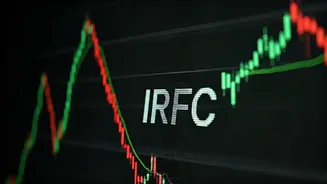Earnings Cycle Overview
The earnings cycle, a critical indicator of market health, is currently under close scrutiny. Experts suggest the cycle is nearing its bottom, a significant
point for investors. This implies that the challenging phase is possibly coming to an end, paving the way for potential growth. A detailed look into the financial performance of various companies helps in understanding this cycle. Analyzing key financial indicators such as revenue, profit margins, and debt levels provides a comprehensive perspective. The expectation for an upward trend in earnings is crucial for investors as it directly influences stock prices and overall market sentiment. This understanding helps in making informed decisions about investments and assessing the future market position. The expectation of improvement in the earnings cycle indicates a period of potential recovery and growth for the market.
H2FY26 and Beyond
The anticipation of an earnings cycle turnaround is particularly focused on the second half of fiscal year 2026 (H2FY26) and beyond. This timeframe is of high significance, as it indicates a period when improvements are expected to become more evident. Several factors influence this expected improvement. They include broader economic conditions, industry-specific trends, and company-level strategies. An optimistic outlook on the second half of FY26 signals a potential shift towards increased profitability and enhanced market confidence. This timeframe offers opportunities for strategic planning and investment. Considering long-term investment strategies is important during this phase, as the market begins to show signs of recovery and growth. Investors are keen on understanding what drives this expectation and how it may impact their investment portfolios. The focus is on a sustainable increase in earnings, which is viewed as a foundation for long-term financial health and stability within the market.
Market Trends Analysis
Alongside the earnings cycle, several market trends require examination. These trends give deeper insights into the forces that shape the investment landscape. Examining key sectors, like technology, healthcare, and finance, helps determine their influence on overall market performance. Factors such as government policies, consumer behavior, and technological advancements play crucial roles in defining these trends. Monitoring these trends is crucial for making informed investment decisions. This is important to anticipate market changes and adjust strategies. The interplay between the earnings cycle and market trends illustrates how different factors influence the health of the market. Staying informed about these trends helps investors make strategic choices and evaluate market opportunities. This comprehensive analysis provides a deeper understanding of market dynamics.
Investment Strategies
As the earnings cycle evolves, investors must adjust their strategies to achieve optimal returns. One critical approach is portfolio diversification, spreading investments across various sectors and asset classes to reduce risk. Selecting investments is crucial when looking into potential growth areas and avoiding those at risk of decline. Investing in value stocks, which are often undervalued by the market, may offer potential returns as the earnings cycle improves. Keeping a long-term perspective is crucial, avoiding the temptation to make hasty decisions. Investors must be patient and monitor their portfolios carefully. Understanding risk tolerance and matching it with investment strategies is essential for making informed decisions. By understanding the earnings cycle and aligning with market trends, investors can create strategies that lead to successful investment outcomes.











